Blogs
tag: hybrid learning
Home /
hybrid learning
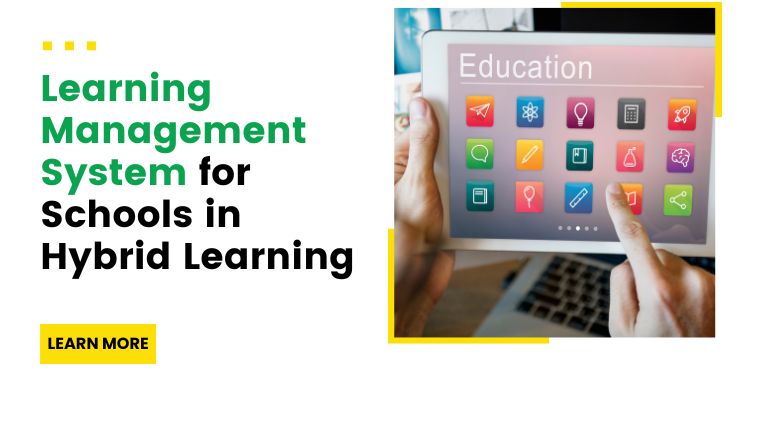
April 8, 2025
Learning Management System for Schools in Hybrid Learning
Education has changed dramatically in recent years, with hybrid learning becoming a key part of modern teaching. By blending online and offline methods, hybrid learning offers greater flexibility, better access, and more personalized experiences for both students and teachers. But managing this mix of learning styles can be a challenge. That’s where hybrid school management systems transform how schools run and support this model. This article will examine how these systems help make hybrid learning smooth, efficient, and impactful. What is hybrid learning? Hybrid learning combines traditional in-person classes with online learning tools. Students can join classroom sessions while also using digital resources, virtual lessons, and remote tools. This approach supports different learning styles and schedules, making education more flexible and inclusive.
Read More ⟶
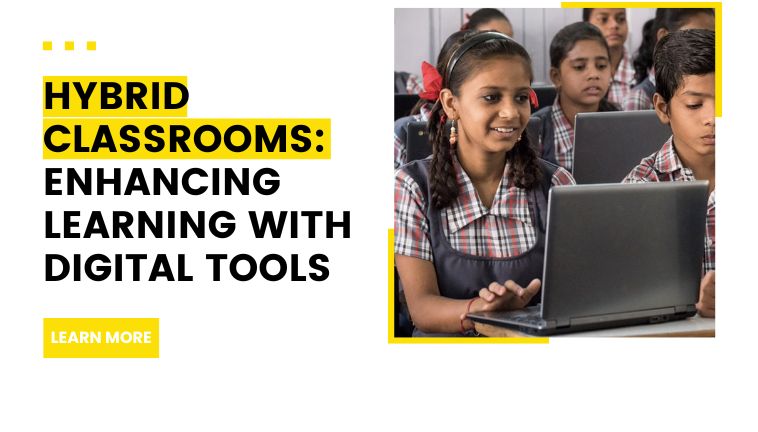
January 20, 2025
Hybrid Classrooms: Enhancing Learning with Digital Tools
Have you noticed how learning has changed in recent years? It's been quite a journey! We've gone from chalkboards to smart boards, and from textbooks to tablets. Now, we're seeing a big shift towards hybrid classrooms. What are Hybrid Classrooms? A hybrid classroom is a special kind of learning where students can learn both in the classroom and from home. It's like having the best of both worlds! How do Hybrid Classrooms Work? Imagine a classroom where students can learn together even if they are not in the same room. This is possible with the help of amazing technology.
Read More ⟶
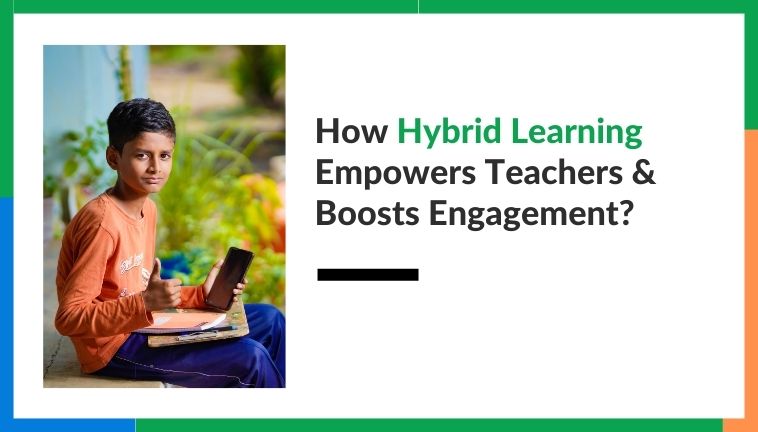
December 20, 2024
How Hybrid Learning Empowers Teachers & Boosts Engagement?
Traditional classrooms are no longer the only option for learning. Today, educators and institutions worldwide are embracing hybrid learning, a flexible and innovative approach to education. A global survey by Anthology, which included over 2,700 students, revealed an exciting shift more than 35% of students now prefer a mix of in-person and online learning. This trend shows that the future of education is evolving in promising ways.
Education is breaking free from traditional limits, with hybrid learning leading the way in digital transformation. But what is hybrid learning exactly? And how can it help teachers tackle challenges while improving the learning experience for students? What is Hybrid Learning? Learning is no longer confined to traditional classrooms. Educators and institutions around the globe are turning to hybrid-first learning as a flexible and modern approach to education.
Hybrid learning, blended learning, merges in-person and online teaching to create a versatile and engaging experience. It adapts to students’ unique learning styles, needs, and preferences by combining the personal connection of face-to-face interactions with the convenience and flexibility of online tools. Why Is Hybrid Learning Effective for Teachers? Online education allows students to learn at their own pace, making hybrid learning an effective way for teachers to tailor instruction. It allows teachers to work with small groups or offer one-on-one support, addressing each student’s needs.
In a , students take charge of their learning journey. They can access online materials at their convenience and move through lessons at their own speed. This flexibility fosters an engaging, motivating, and rewarding learning experience. Understanding the differences between hybrid, flipped, and blended learning is key, as these terms, though often used interchangeably, describe distinct hybrid learning models.
Hybrid learning combines face-to-face and online instruction, where both methods work together to enhance the overall experience.
Flipped learning is a form of hybrid learning where students access content online outside of class and spend class time on activities like discussions and problem-solving.
Blended learning, another hybrid approach, mixes online and in-person teaching with a focus on using technology to enrich face-to-face instruction. In a hybrid learning environment, students get personalized attention and can learn at their own pace. This approach helps them better understand the material and stay more engaged in the learning process. Hybrid learning gives teachers the freedom to design lessons and assess students using both online and offline methods. This flexibility helps them tailor their approach to meet each student’s unique needs. Hybrid learning gives both teachers and students easier access to information. This fosters a deeper understanding of the material and creates more opportunities for meaningful collaboration. If a student misses a class or lecture, they can simply watch it online whenever it’s convenient for them. This flexibility isn’t always available in a traditional learning environment. In emergencies like natural disasters or pandemics, hybrid learning allows students to continue their education from home, ensuring minimal disruption to their studies. Hybrid learning can help address teacher shortages in certain areas by enabling teachers to work from home and connect with more students online, expanding their reach. As teachers transition to hybrid learning, there are several strategies they can use to ensure success for both themselves and their students. Teachers should communicate regularly and clearly, setting expectations for both online and offline work. Being available to answer students' questions is also essential for a smooth hybrid learning experience. Take advantage of the many tools and resources available to support hybrid learning. Online collaboration platforms like Google Docs and Canvas can help streamline communication and make it easier to provide students with timely feedback. Each student learns differently and at their own pace. Stay flexible in your teaching methods and be ready to adjust your plans to meet the diverse needs of your students. Provide options for asynchronous, or self-paced, learning to ensure students can continue their studies without interruption, especially during internet outages or other technical issues. Video calls offer students a way to stay connected and engaged with their teachers and classmates, helping to bridge the gap between online and in-person learning. Create a classroom environment that fosters connection by setting up group workstations or providing laptops to all students, encouraging collaboration and engagement. Before the school year starts, take time to familiarize yourself with the tools and resources you'll be using. This will help reduce confusion and frustration, ensuring a smoother experience for both you and your students. Keep students organized by providing a clear schedule or timeline of due dates. Posting this information in visible places, like Canvas or Google Classroom, helps students stay on track and manage their time effectively. Providing learning activities and course materials ahead of time helps students become familiar with the content, reducing confusion and setting them up for success. Online learning can feel isolating for some students. Make it a point to regularly check in with remote learners, offering support and connection for their well-being. Every student learns at their own pace. Don’t hesitate to slow down and offer additional support to ensure everyone can keep up. Use your learning plan to build connections. Get to know your students as individuals and allow them to see you as their teacher beyond just the curriculum. Students engage more when they’re enjoying themselves. Don’t be afraid to experiment with new teaching methods and strategies to make hybrid learning fun and engaging. In recent years, online classes have grown in popularity, making hybrid instruction more common. Successful hybrid learning blends online courses with in-person instruction, offering a well-rounded educational experience.
However, preparing for exams in a hybrid learning environment can be challenging. With the right tools, strategies, and solutions, students can navigate this process more effectively. provides online solutions such as teacher training, Geneo Assessment Reports, gamified quizzes on , and more. These resources help students focus on areas where they need the most support, offering personalized instruction to boost their exam readiness.
Read More ⟶
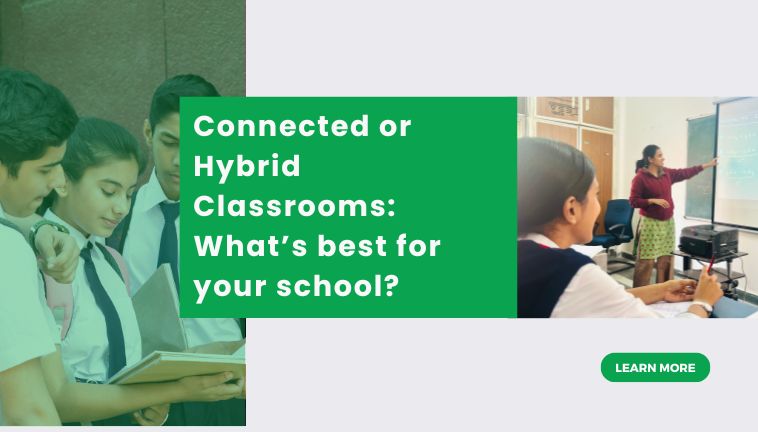
December 13, 2024
Connected or Hybrid Classrooms: What’s best for your school?
As technology becomes more prevalent in classrooms, new terms have emerged to describe how teachers use digital tools. Two popular terms are hybrid classrooms and connected classrooms. But both combine in-person and digital learning, don’t they? So, what sets them apart? Though often used interchangeably, these terms have distinct meanings. If you’re considering introducing digital learning in your school, here’s a simple guide to understanding these two models' differences. What are Hybrid Classrooms? Hybrid classrooms employ a teaching method where students and teachers are usually in separate locations. The term became popular during the pandemic as a way to meet social distancing needs. In this model, both students and teachers join lessons and activities online, often from their homes. How do Hybrid Classrooms work?
Read More ⟶
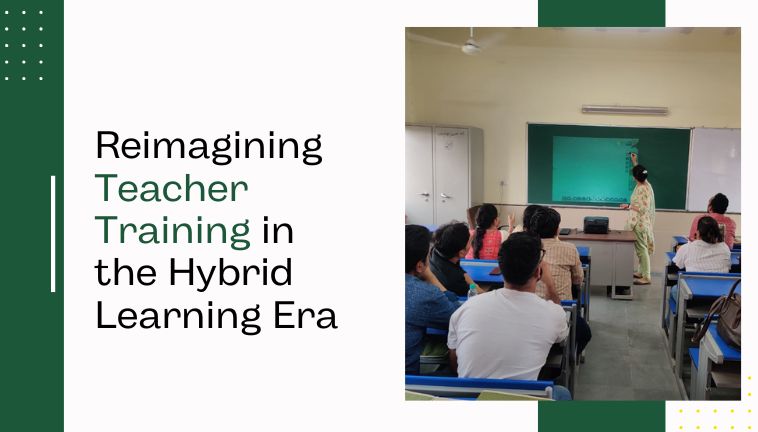
December 2, 2024
Reimagining Teacher Training in the Hybrid Learning Era
Education is evolving rapidly, and so is the way teachers are trained. As classrooms embrace hybrid learning, the training process for educators must adapt too. With a focus on technology and flexibility, hybrid learning is reshaping teacher training to meet the needs of modern educators. This shift is not just a trend; it’s a necessity for future-ready teaching. The Changing Face of Teacher Training Traditional methods of teacher training are no longer enough. Teachers today must navigate both in-person and digital classrooms .
Read More ⟶
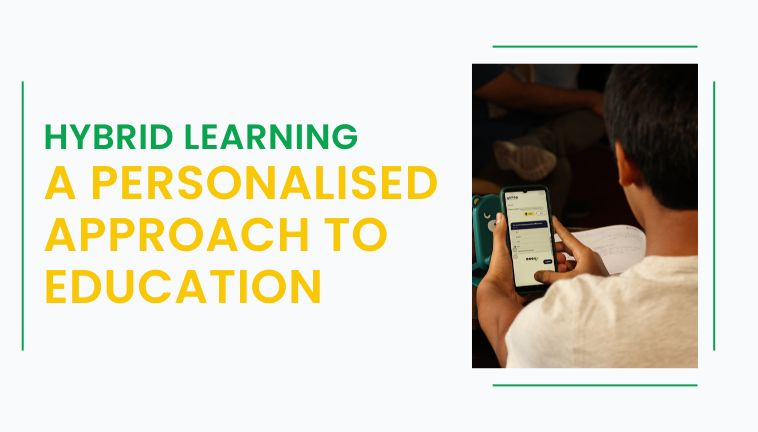
November 8, 2024
Hybrid Learning: A Personalized Approach to Education
In today’s rapidly evolving educational landscape, hybrid classrooms and hybrid learning have emerged as transformative models, blending traditional face-to-face teaching with digital engagement. As more schools and educational institutions actively seek ways to make learning more accessible, effective, and resilient, hybrid learning has emerged not only as a timely response to recent global disruptions but also as a sustainable model for the future. Moreover, this hybrid approach seamlessly bridges in-person and online learning, maximizing resources, tailoring learning experiences, and equipping students with essential digital literacy skills for a technology-driven world. The Rise of Hybrid Classrooms A hybrid classroom combines both physical and digital elements to create a flexible learning or hybrid learning environment. Students alternate between attending classes on campus and engaging remotely via digital platforms. They have access to real-time or recorded lectures, interactive discussions, and that support collaboration.
Read More ⟶

October 7, 2024
Hybrid Classrooms: The Future of Education
As a teacher, you're skilled in traditional teaching methods. But with the world changing fast, a new approach can boost how you teach. Have you heard of hybrid classrooms?
It may sound like just another trend, but we promise, it’s becoming the future of education . Let’s break it down for you in a simple way. Keep reading! What is a Hybrid Classroom? A hybrid classroom blends traditional in-person teaching with online elements. Picture this: some of your students are in the classroom, while others join from home or another location through technology. It’s not just about adding a Zoom call to your lesson plan; it’s a balanced approach where in-person and online students get the same learning experience.
The idea of a is more than just convenience. It’s about offering flexibility in teaching methods, catering to different learning styles, and making education accessible to more students. Whether they’re physically there or joining online, the experience should feel seamless. You might be asking, "Why change from the traditional methods that have worked well so far?" That’s a valid question, and we understand!
But here’s why hybrid learning is quickly becoming the norm and why you might want to give it a try: In a hybrid classroom, students can learn from anywhere, which is crucial when attending school in person isn’t possible. Think of times when students are sick, face transportation issues, or during events like a pandemic. Hybrid education allows them to keep learning without falling behind.
For teachers, this model offers flexibility in lesson delivery. You can combine traditional teaching with modern tech. Some lessons may work better in person, while others may benefit from digital tools like simulations, quizzes, or pre-recorded videos. Schoolnet’s hybrid classroom makes it easy for you to edit and adjust lessons to meet students’ needs. Traditional classrooms often struggle to keep every student engaged. Some students are visual learners, others learn by listening, and some do best in interactive settings. let you meet these needs. Online tools, like quizzes and animations, can help students who may not respond as well to lectures.
Hybrid classes also encourage participation in new ways. Tools like polls, chats, and breakout rooms let quieter students contribute without the pressure of speaking in front of everyone. This approach fosters a more inclusive learning environment where all students can thrive. Think about the world your students will enter after school. Many workplaces now use a mix of in-person and virtual communication, especially with the rise of remote work. By using a hybrid classroom, you’re preparing students for real-life situations where they’ll need to collaborate both face-to-face and online. You’re not just teaching academics you’re building the digital skills they’ll need for future careers. One of the best parts of is the ability to personalize lessons. In a traditional class, it’s hard to meet every student’s individual needs. With a hybrid model, you can create tailored learning paths using technology. You can provide extra resources for students who need more help or offer advanced materials to those ready to move ahead. Platforms like Roombr allow students to access lessons anytime, anywhere.
Online systems can also adjust the difficulty of tasks based on student performance, making sure every learner is challenged at their level. This is much harder to achieve in a traditional classroom setting. Shifting from traditional to does come with challenges. But the benefits far outweigh the hurdles, and with a bit of planning, it's completely doable! Some students may not have the right tools at home, like laptops or reliable internet. However, many schools and governments are working hard to provide these resources to close the digital gap. Adapting to hybrid learning means teachers need to get comfortable with new technology. While it may seem overwhelming at first, there are many training programs available. Once you learn the basics, you'll see how technology can make your teaching easier. Handling both online and in-person students might feel like managing two different tasks. But with Roombr , you can manage both together, making the process smoother than you might think. Start by selecting a platform that supports both in-person and online teaching. Roombr offers the perfect solution, seamlessly integrating both physical and virtual classrooms. To ensure all students get the same experience, prepare materials for both settings. This could include digital lessons, like recorded lectures or interactive quizzes, alongside physical handouts for students in class. Keep your lessons interactive for both groups. Use tools like polls, chat features, breakout rooms, and discussion boards to involve all students, whether they’re in class or online. Track your students' progress by using data from online quizzes, assignments, and participation. This will give you insights into how they're doing and help you adjust lessons to meet their needs.
Schoolnet’s hybrid classroom is perfect for hybrid learning because it smoothly combines online and in-person teaching, making education more flexible and accessible. It includes an interactive projector and a large, expandable display that lets teachers deliver engaging lessons in the classroom, while remote students can join online. With built-in AI, Schoolnet improves recorded sessions and gives students 24/7 access to lessons. We know that moving from a to a hybrid one might feel like a big step, but it’s a change worth exploring. Hybrid education isn’t just a response to current challenges; it’s about preparing your teaching for the future. By combining traditional and modern methods, you can provide your students with a more engaging, flexible, and personalized learning experience.
Read More ⟶

May 15, 2024
Digital Classrooms vs YouTube: Why Structured Learning Wins?
The educational landscape is undergoing a rapid transformation. In this digital age, digital classrooms have emerged as a powerful tool, revolutionizing traditional teaching methods and offering a superior alternative to platforms like YouTube . While YouTube boasts a vast library of educational videos, it lacks the structure and engagement necessary for effective learning.
Read More ⟶
© Schoolnet India Limited





